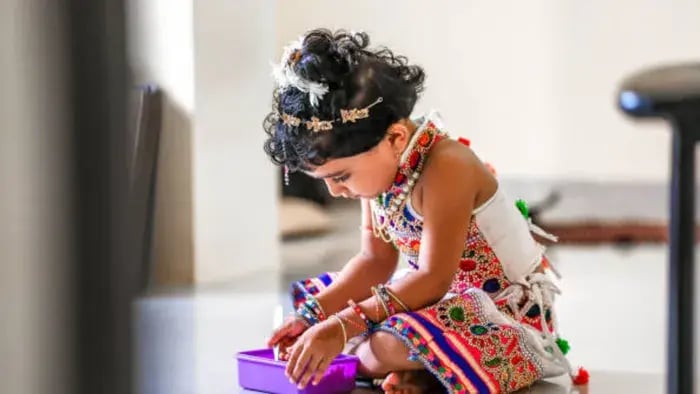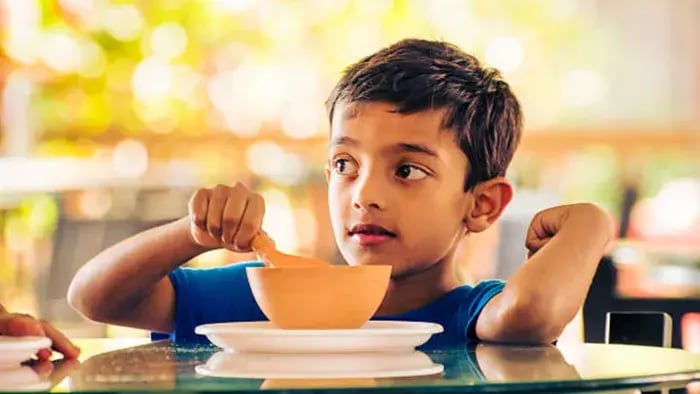- Toddlers (2–3 Years): Soft Food They Can Hold And Eat
- Preschoolers (4–5 Years): Tiffins That Are Tidy And Tasty
- Early Primary (6–8 Years): Bite-Sized Food That Is Colorful And Delicious
- Upper Primary (9–11 Years): Filling Foods That Keeps Them Going
- Preteens (12–13 Years): Tasty Meals That Is Protein-Rich
- Teens (14–16 Years): Hearty Options They Will Actually Eat
- Across All Ages: A Bit Of Care Makes All The Difference
Introduction
Packing the right tiffin box is one of those small daily acts that makes a big difference. It’s not just about what fits in the box—it’s about what fuels your child through the day, keeps them happy at lunch break and brings a little bit of home to school. But what works for a toddler may not work for a teenager, and every age has its own rhythm, appetite and eating habits.

Younger children need smaller portions, softer textures and colourful meals they can eat without help. School-going kids look for food that tastes familiar, isn’t messy and gives them steady energy for learning and play. And teens? They need meals that feel more grown up, keep them full and aren’t too fussy to eat in a short break. The goal at every stage is the same: nutritious, appealing and easy to finish.
The perfect tiffin is about knowing what your child likes, what their body needs and what fits into your morning routine. It can be parathas cut into triangles, millet dosas rolled with chutney or fruit paired with a mini sandwich; there’s a lot you can do with a little planning. With the right balance of taste, texture and nutrition, a good tiffin box becomes more than just a meal; it becomes a midday moment of comfort.
7 Tips What Makes a Perfect Tiffin Box for Kids at Every Age

Every tiffin box tells a story; it holds not just food but care, thought, and the energy a child needs to get through the day. But what goes into that box isn’t the same for everyone. A toddler may need bite-sized, soft finger foods. A 9-year-old might want something familiar but not boring. A teen may appreciate a no-fuss, filling meal that still feels homey.
Here are 7 age-wise tips to help you plan tiffins that are thoughtful, practical, and truly made for your child.
Toddlers (2–3 Years): Soft Food They Can Hold And Eat
At this age, kids are still getting used to textures and chewing. So, soft foods like mini idlis, suji chilla strips, boiled veggies, or small fruit pieces work best. Choose items that they can eat on their own without help. Make it colorful; kids eat with their eyes first. Avoid sticky or crumbly items that might frustrate them. A silicone box with small compartments makes eating more fun and manageable.
Preschoolers (4–5 Years): Tiffins That Are Tidy And Tasty
Children at this stage may still be picky, so keep tiffins simple but familiar. Mini parathas, mashed potato sandwiches, or soft vegetable theplas with curd work well. Keep spices low and avoid anything too oily. Portion size matters, pack just enough to encourage them to finish without feeling overwhelmed. Use food cutters or shape moulds occasionally, it adds fun without needing extra time.
Early Primary (6–8 Years): Bite-Sized Food That Is Colorful And Delicious
This is when children start showing more independence and food preferences. Add variety while keeping it balanced. Try paneer wraps, stuffed dal parathas, mini uttapams, or curd rice with veggie sticks. One main item, one fruit, and a small treat (like a date laddoo) is a good balance. Focus on foods that can be eaten without help and don’t spill easily in the box.
Upper Primary (9–11 Years): Filling Foods That Keeps Them Going
By now, your child may be hungrier and more opinionated about what they want to eat. Pack something filling but not too heavy, like poha with roasted peanuts, egg rolls, or vegetable upma with a fruit salad. Include at least one protein source to help them stay full. Avoid runny gravies or overly delicate items that might leak or get soggy by lunch hour.
Preteens (12–13 Years): Tasty Meals That Is Protein-Rich
Growth spurts demand more protein and energy. Think along the lines of soybean or paneer parathas, vegetable pulao with curd, or millet dosas with peanut chutney. Keep flavors interesting without going overboard. This age group may also start caring about how food looks, so packing neatly, using sections, and avoiding mess can help ensure they actually eat it.
Teens (14–16 Years): Hearty Options They Will Actually Eat
Teenagers often skip meals or reach for junk, especially if the tiffin doesn’t appeal to them. Include meals that feel hearty, like whole-wheat sandwiches with paneer and veggies, stir-fried noodles with sprouts, or khichdi with a podi sprinkle. Try to include fruit, even if it’s just apple slices or a banana.
Across All Ages: A Bit Of Care Makes All The Difference
No matter the age, a perfect tiffin is about warmth and care. Add a steel spoon or napkin, a bottle of water or buttermilk if possible, and a small treat now and then. It could be a laddoo, a few nuts, or even a note on the lunchbox lid. It reminds your child that even in the middle of a busy school day, home is never too far.
Conclusion

There’s no one-size-fits-all tiffin, and that’s the beauty of it. Your child’s appetite, mood, and schedule will change, but what stays constant is your intention to nourish and care. A perfect tiffin is one that gets eaten, enjoyed, and remembered with a smile. With a little thought, the right combinations, and age-specific tweaks, tiffin time can become a happy, nourishing pause in your child’s school day.
Her love for storytelling began with reading her grandfather’s speeches, where Tarishi saw the power of words in creating lasting memories. Combining her passions for food and writing, she has turned her life into a fulfilling path of sharing stories that celebrate flavours and how food brings communities together.
The views expressed are that of the expert alone.
The information provided in this content is for informational purposes only and should not be considered a substitute for professional medical advice, diagnosis, or treatment. Always seek the advice of your physician or another qualified healthcare provider before making any significant changes to your diet, exercise, or medication routines. This is a sponsored article.
















